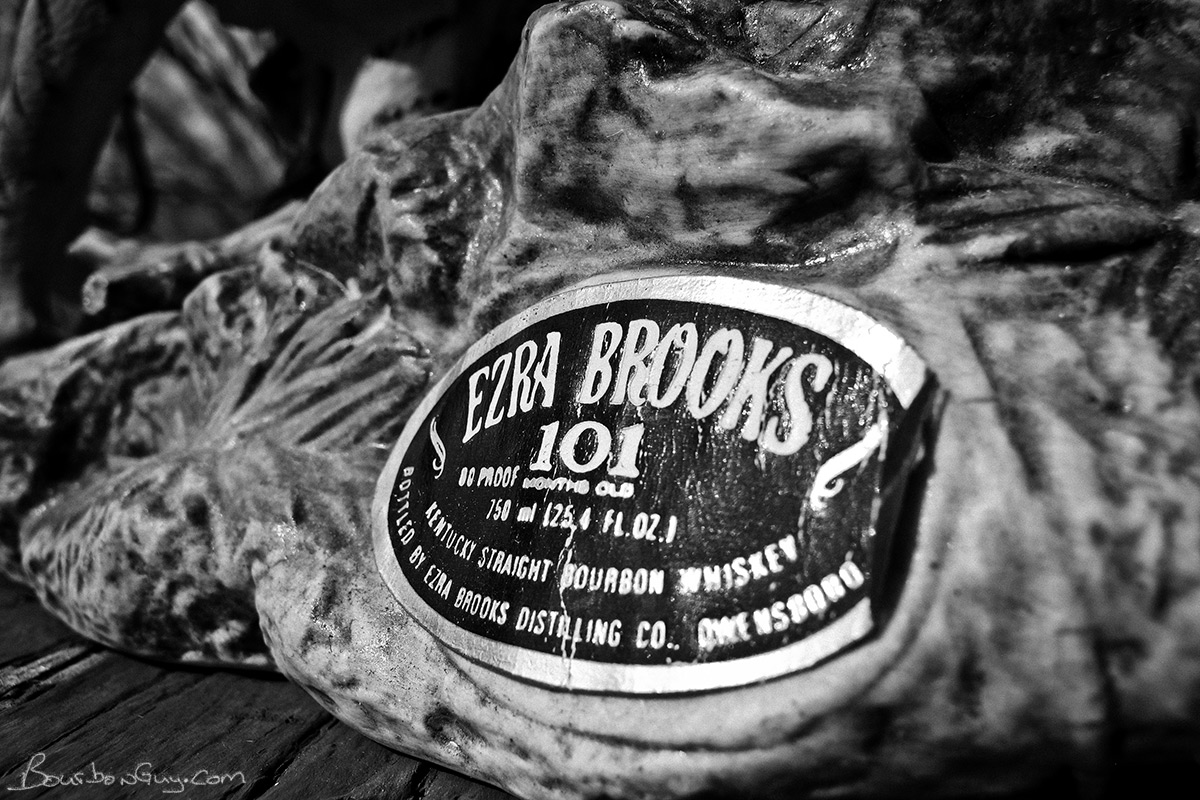I’m a big fan of old liquor bottles. We’ve talked about this. I tend to go to antique stores, estate sales and bottle shows to look at and occasionally buy old bottles. Most of these are empty and I almost always get the comment: “too bad this isn’t full, huh?” But sometimes they are full. And when they are, I like to check the contents and the seal. If it’s bourbon, it hasn’t been opened and isn’t very expensive, I’ll bring it home with me.
When I search through old bottles, I also see a lot of decanters. Collectable decanters were a way for a struggling bourbon industry to try to stay afloat while tastes changed. And it must have worked because we have bourbon today, and there are a lot of old decanters for sale out there.
At some point in the mid-Twentieth Century, whiskey making changed. In the United States, the uncertainty of war coupled with changing fashions led whiskey makers to lobby for an increase in the bonding period of aging whiskey. In other words, they wanted to be able to sit on their aging stocks a bit longer before needing to pay taxes on it. It was granted and whiskey making and marketing started to focus on longer aging times. Larger age statements begins to appear and age became associated with quality. Around the same time proofs started dropping as well. Where 100 (and 101) proof were once fairly standard 86 proof was becoming more and more common.
With an increasing focus on age and decreasing proofs, it isn’t terribly surprising that the largest number on many of the old decanters you find is the age. What is surprising is that the age is stated in months not years. Unlike many of today’s whiskeys who use months for their age statements, it isn’t because the whiskey is young though. 100 months is the most common age I’ve seen on Jim Beam decanters (though I’ve also seen 155 on a few occasions). And I’ve seen numerous 101 month Ezra Brooks decanters.
I can think of a couple of reasons why 100 months might have been used. Much like the producers who put out three year old whiskey today and label it 36 months, 100 just sounds bigger than 8. The other reason I can think of is that 100 and 101 months bear a striking resemblance to the 100 and 101 proof that consumers had been used to seeing before proofs started dropping. Kind of an early version of the Very Old Barton “6” that Sazerac uses today. I don’t know if the actual answer is one, the other, or both. In any case, 35 years later, it is fun to ponder.
Ezra Brooks - Bengal Tiger, 1979
Purchase info: $15 at a bottle and advertising show
Details: From the Ezra Brooks Wildlife Collector Series. 101 months old (8.417 years). 80 proof.
Nose: Green apples, baking spices and a faint earthiness to go along with some oak. After some time it transitions to a strong butterscotch bomb.
Mouth: Not as sweet as I was expecting. Baking spices, brown sugar, oak and earthiness.
Finish: On the longer side of medium. Sweet with lingering baking spices and green apple.
With Water: The mouth gets a bit livelier and the green apple comes through more. The nose gets spicier with a touch of anise. Water kills the finish.
Thoughts: As Ezra Brooks has always been a sourced whiskey, it was really interesting to see what was being sourced in 1979. With it’s apple and spice notes, it reminds me a bit of a Brown-Forman bourbon. (Though I doubt that it is since Ezra Brooks debuted by impersonating their biggest brand and were sued by them). Based on this bottle, it is the equivalent of an ok $30-45 bottle today. But that said, I don’t know that I’d seek out another bottle of it. It’s pretty good, but not the best I’ve ever had.
A word on lead: There is a forum thread on straightbourbon.com that details the story of a man getting the whiskey from one of his decanters tested for lead and finding very high levels of it. I do not have the equipment to test this myself. I did however allow the bourbon from this decanter to evaporate and then drip the contents of a lead paint tester into the residue (saving a drop or two for the conformation strip) and there was no "red for lead." I won’t say this bourbon doesn’t contain lead or that any of the bourbon from old decanters you find will or will not contain lead. But this test satisfied my curiosity enough to allow me to do the small tasting I did for this post.
For more information on lead poisoning visit: http://www.nlm.nih.gov/medlineplus/ency/article/002473.htm
BourbonGuy.com accepts no advertising. It is solely supported by the sale of the hand-made products I sell at the BourbonGuy Gifts Etsy store. If you'd like to support BourbonGuy.com, visit BourbonGuyGifts.com. Thanks!




